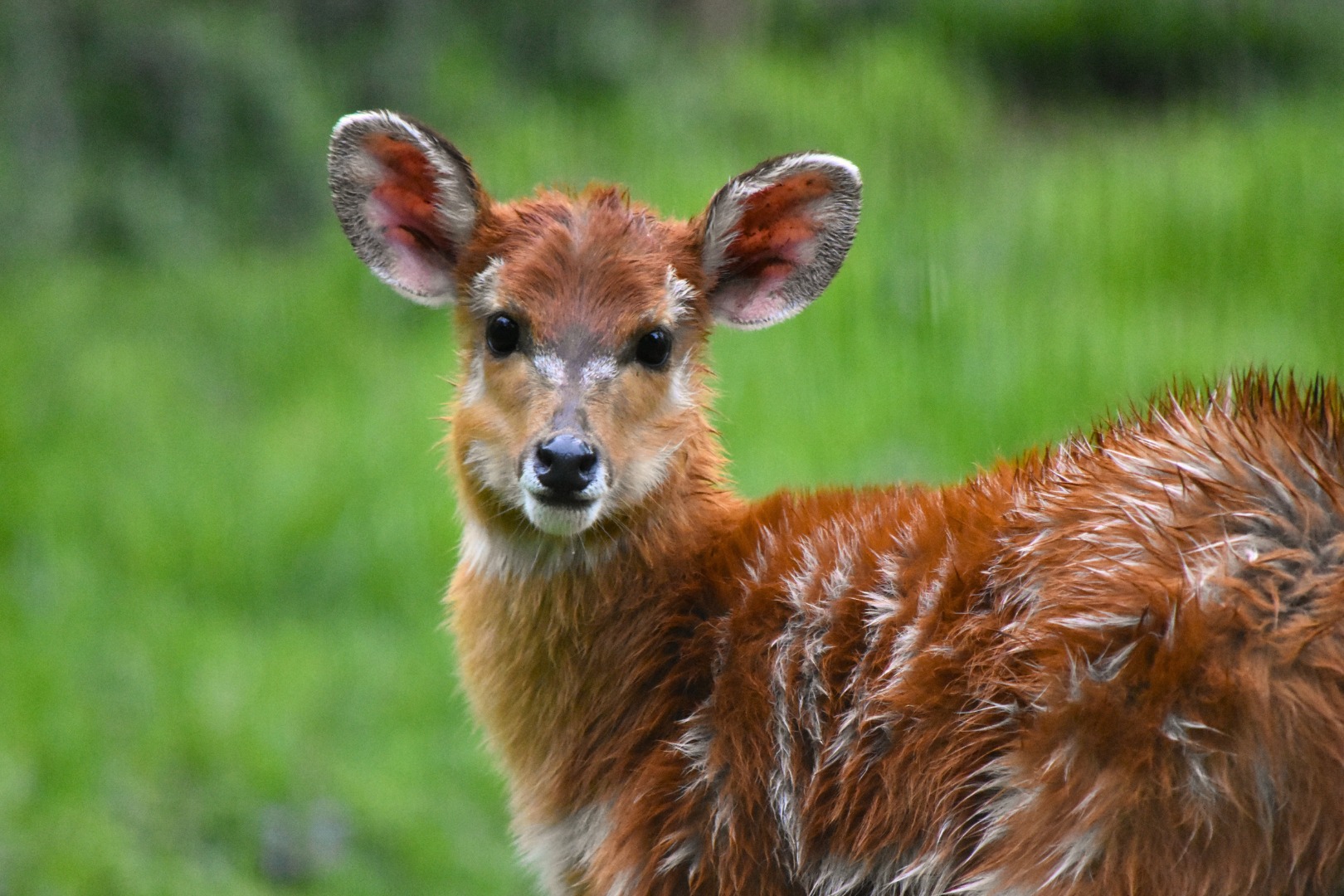– The biology and habitat of the sitatunga, including their adaptations for a semi-aquatic lifestyle
– The significance of Sahar’s sixth birthday within the context of wildlife conservation
– The role of zoos in the conservation and education of rare and endangered species
– The challenges facing sitatungas in the wild, including habitat loss and poaching
– Strategies for effective wildlife conservation, with a focus on community involvement and habitat restoration
Sitatungas, or Tragelaphus spekii as they are known scientifically, are among the most interesting antelopes adapted for life in marshy areas across Central Africa. Understanding their physical adaptations provides insight into the evolutionary marvels of nature. These animals have elongated, splayed hooves that allow them to navigate their swampy environment with ease, preventing them from sinking into the mud. Furthermore, their coats are water-resistant, an essential feature for an animal spending a significant amount of time in the water.
Celebrating Sahar’s sixth birthday, the sitatunga carries significance beyond a mere milestone. It represents a triumph in zoo management and species conservation efforts. Sitatungas face numerous threats in the wild, ranging from habitat degradation to illegal hunting. In this context, each year of Sahar’s life symbolizes the potential for captive breeding programs to contribute positively to this species’ genetic diversity and long-term survival.
Zoos play a critical role in the conservation and education efforts of many species, including the sitatunga. They provide a sanctuary for animals like Sahar and serve as educational platforms to inform the public about the importance of preserving natural habitats and the challenges facing wildlife. Such efforts are vital in fostering a connection between people and wildlife, encouraging active participation in conservation initiatives.
The challenges facing sitatungas in their natural habitat are manifold. Rapid deforestation and the encroachment of agricultural activities are shrinking the available space for these animals to live and breed. Additionally, illegal poaching poses a direct threat to their survival. Addressing these issues requires a multifaceted approach involving local community engagement, effective law enforcement to combat poaching, and international cooperation to manage and restore critical habitats.
Successful wildlife conservation hinges on strategies that encompass habitat restoration, community involvement, and sustainable management practices. Engaging local communities in conservation efforts is crucial; their participation ensures that conservation measures are practical and culturally acceptable. Moreover, habitat restoration projects can revitalize ecosystems, providing the necessary resources for sitatungas and other wildlife to thrive. Initiatives should also focus on sustainable management practices that balance human needs with wildlife conservation, ensuring a harmonious coexistence between people and nature.
In summary, the story of Sahar, the sitatunga, turning six years old today, is more than a celebration of a birthday. It reflects the broader challenges and achievements in the field of wildlife conservation. From the biological uniqueness of the sitatunga and its adaptations to the critical role of zoos in conservation and public education, the narrative encompasses important themes in achieving sustainable solutions for wildlife preservation. By focusing on conserving species like the sitatunga, society can make significant strides in advancing biodiversity conservation and fostering a healthier planet for future generations.
*****
Source Description
How it started versus how it’s going. Sahar, the sitatunga, turns 6 years old today! 🎉
📸 Keeper Cory


